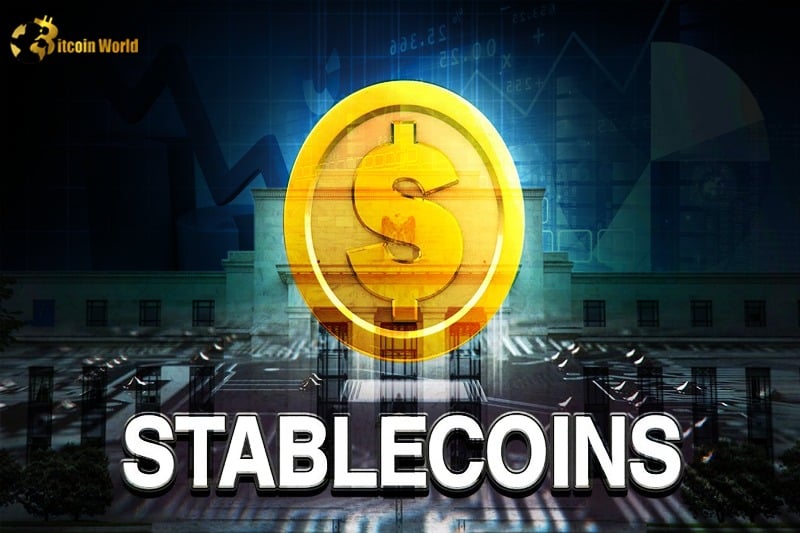Are stablecoins truly ‘stable’? While designed to be pegged to fiat currencies like the US dollar, a recent report from the Federal Reserve Banks of Boston and New York raises serious questions about their stability and potential impact on the broader financial system. Think of stablecoins like Tether (USDT) and USD Coin (USDC) – they’ve become crucial players in the crypto world. But are they as safe as we assume?
Stablecoins vs. Money Market Funds: A Risky Resemblance?
The Fed report, titled “Runs and Flights to Safety: Are Stablecoins the New Money Market Funds?,” delves deep into comparing stablecoins to traditional money market funds. Why this comparison? Because both are designed to be low-risk and easily accessible stores of value. However, the report highlights some unsettling similarities, particularly when things go wrong.
Here’s the crux of the issue:
- Similar Run Patterns: The research found that both stablecoins and money market funds exhibit similar patterns during ‘runs.’ What’s a run? It’s when investors panic and rush to withdraw their funds, fearing losses. Think of it like a bank run, but in the digital asset space.
- Financial Instability Risk: The report warns that if stablecoins continue their rapid growth and become more intertwined with traditional financial markets, they could become a significant source of instability. This interconnectedness is key – problems in the stablecoin market could spill over and affect the wider economy.
- The ‘Break-the-Buck’ Threshold: Researchers identified a critical threshold for stablecoins: $0.99. If a stablecoin’s price dips below this level, it can trigger accelerated redemptions and potentially a full-blown run. This is similar to the ‘break-the-buck’ event in money market funds, where a fund’s net asset value drops below $1 per share, causing investors to flee.
To understand this better, let’s break down the key events and comparisons highlighted in the report:
Comparing Runs: Stablecoins vs. Money Market Funds
The Fed report draws parallels between investor behavior during:
- Stablecoin Runs (2022 & 2023): Events like the Terra (UST) collapse in 2022 and other periods of crypto market stress saw significant outflows from stablecoins as investors lost confidence.
- Money Market Fund Runs (2008 & 2020): The 2008 financial crisis and the onset of the COVID-19 pandemic in 2020 triggered runs on money market funds as investors sought safer assets.
The comparison suggests that despite being different asset classes, the psychological triggers for investor panic and the resulting ‘flight to safety’ are surprisingly similar.

Why is the $0.99 Threshold So Important?
The $0.99 ‘break-the-buck’ threshold for stablecoins is a crucial finding. It signifies a point where investor confidence can rapidly erode. Here’s why:
- Psychological Trigger: For a stablecoin designed to be worth $1, dropping below $0.99 can be a significant psychological shock. It signals that the peg might be breaking, triggering fear and uncertainty.
- Redemption Pressure: Once the price dips, investors holding large amounts of stablecoins might rush to redeem them, fearing further losses. This mass redemption can further drive down the price, creating a negative feedback loop.
- Run Amplification: This rapid redemption can quickly escalate into a run, potentially causing a significant price crash and impacting the entire stablecoin ecosystem.
Italy’s Central Bank Sounds the Alarm: More Regulation Needed
Adding to the concerns raised by the Fed report, Italy’s central bank is also actively working to understand and prevent stablecoin runs. As Cointelegraph recently reported, Italian authorities point to the Terra/Luna collapse of 2022 as stark evidence that stablecoins are not always as ‘stable’ as their name suggests.
Italy’s call for a global regulatory body to oversee cryptocurrencies, stablecoins, and related technologies underscores the growing international consensus that stronger regulation is needed to manage the risks associated with these digital assets.
What Does This Mean for the Future of Stablecoins?
The findings of the Federal Reserve report and the concerns raised by central banks like Italy’s highlight a critical juncture for stablecoins. While they offer benefits like faster and cheaper transactions within the crypto ecosystem, their potential to introduce financial instability cannot be ignored.
Moving forward, several key aspects are likely to shape the future of stablecoins:
- Increased Regulation: Expect stricter regulatory frameworks to emerge globally, focusing on reserve requirements, transparency, and investor protection for stablecoins.
- Enhanced Stability Mechanisms: Stablecoin issuers may need to explore more robust mechanisms to maintain their peg and prevent runs, potentially including more conservative reserve management and clearer redemption policies.
- Greater Scrutiny: Both institutional and retail investors will likely exercise greater caution and due diligence when using or holding stablecoins, paying closer attention to their underlying reserves and risk profiles.
In Conclusion: Navigating the Stablecoin Landscape
Stablecoins are a fascinating and rapidly evolving part of the cryptocurrency landscape. The Federal Reserve report serves as a crucial reminder that ‘stable’ doesn’t necessarily mean ‘risk-free.’ Understanding the potential vulnerabilities of stablecoins, especially their susceptibility to runs and their potential impact on financial stability, is essential for both investors and regulators. As the crypto space matures, thoughtful regulation and robust stability mechanisms will be crucial to ensure that stablecoins can fulfill their promise without introducing undue risk to the broader financial system.
Disclaimer: The information provided is not trading advice, Bitcoinworld.co.in holds no liability for any investments made based on the information provided on this page. We strongly recommend independent research and/or consultation with a qualified professional before making any investment decisions.


